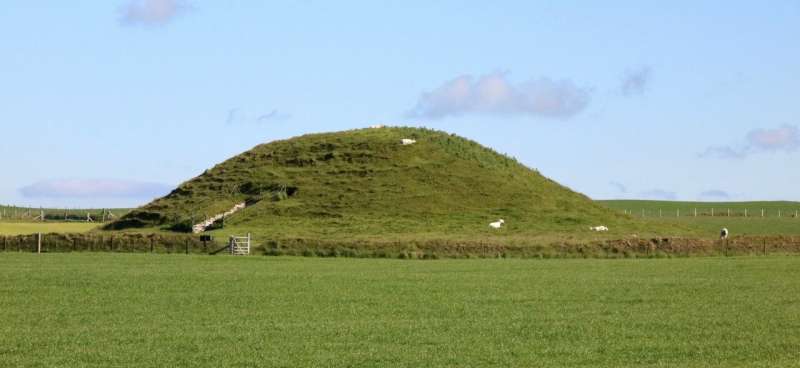Upside down houses for the dead at Maeshowe

New archaeological research by the University of the Highlands and Islands at the Stone Age tomb, Maeshowe located within the Orkney UNESCO World Heritage Site, has found its side chambers are stylistically upside-down from the main chamber, and therefore proposes they were built as inverted netherworlds specifically for the dead to enter the afterlife.
The research investigation led by Jay van der Reijden, a Masters by Research student at the university's Archaeology Institute, studies the communally-built dry-stone tombs, referred to as 'houses for the dead' given the similar layout to domestic houses. Her work shows the side chambers of Maeshowe have literally been built for the dead by inverting their architectural designs, as though the chamber is within the underworld.
Her novel findings, will be published tomorrow (4 September 2020), in the Archaeological Review from Cambridge and are based on inspecting the physical aspects of the stones such as their shape and orientation to reveal the existence of unique design oppositions between the main and side chambers.
Ms. van der Reijden said: "I'm delighted that my research, studying the order by which stones have been placed during construction, has been able to reveal novel results and that it is therefore able to make a real contribution to the field of Archaeology.
"Visualise the wall-stones are like wallpapers, and when you repeatedly hang them upside down in distinct locations patterns become discernible. The swaps include the reversal of multiple architectural features normally placed on the right-hand side being on the left only inside the side chambers. The interpretation is that the side chambers are built to be within the netherworld, by the main chamber walls acting as membranes, separating this life and the next, and that the internal walling material is conceived to physically represent the underworld."
Nick Card, excavation director of the Ness of Brodgar, said: "Despite being a focus of attention since its first modern day entry over 150 years ago, the iconic Maeshowe continues to reveal its secrets through careful and considered study. This study offers new ways of approaching and understanding the construction and use of not only this monument but has wider implications for the study of Neolithic stone-built monuments and the society that constructed them".
The article is in the 30th anniversary issue for the research methodology 'chaîne opératoire', which reverse-engineers sequences of events within archaeological findings, originally proposed in the 1990 volume. Ms. van der Reijden's publication links to the first edition which included an article on Neolithic Orkney.
Provided by University of the Highlands and Islands





















